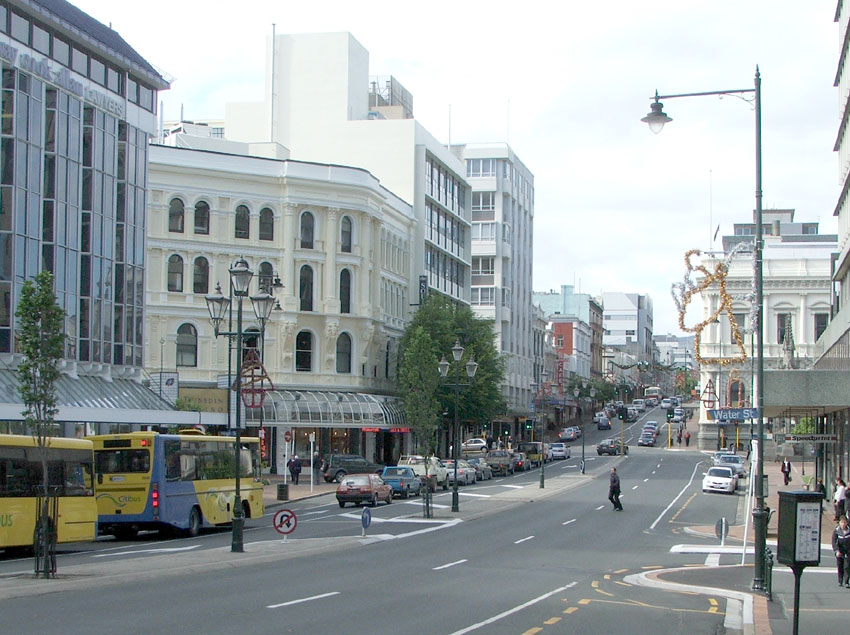19 Vehicle Travel / Speed Restriction Areas
19.0.1 Description
Vehicle Restrictions include various regulatory strategies to limit automobile travel at a particular time and place.
- Some cities discourage or prohibit automobile traffic on certain roads at certain times to create pedestrian-oriented commercial area.
- Some cities have Auto-Restricted Zones that limit automobile access, for example, to residents and commercial vehicles (eg, 20-min neighbourhoods in Melbourne (Australia), Singapore, Hamilton (NZ)).
- Some cities are divided into traffic cells that have direct walking, cycling and transit connections, but require a longer trip to travel between by private automobile.
- Some cities have area road pricing, where motorists must pay to drive in a certain area as a traffic congestion reduction strategy.
- One method to reinforce a speed reduction is to also reduce lane and/or road width (a form of "road diet").
19.0.2 Type of travel affected
These generally affect vehicle travel in a particular area or time period. A common form of restriction is a ‘Low emissions neighbourhood’.
19.0.3 How travel and emission effects can be measured and modelled
These programs can be evaluated based on experience in similar situations eg, Waltham Forest, UK (pop 276k) had -56% vkt after slow speed neighhourhood.
Reducing speed limits from 50 km/h to 30 km/h can reduce fuel consumption – and related emissions – by 7%, if rapid acceleration and deceleration are avoided. A 10 km/h speed reduction from 60 km/h to 50 km/h can achieve a 5% reduction in CO2 emissions.
More generally, there is much debate as to whether and to what degree speed limits achieve CO2 and other pollutant-emissions reductions. The most fuel-efficient driving occurs at around 50–60 km/h.
19.0.4 Secondary impacts
Secondary effects vary. If implemented as part of an integrated program that improves non-auto modes these can provide additional vehicle travel reductions, but in other cases they may simply shift where or when people drive with no or negative impacts on traffic and emissions.
Lower road speeds result in fewer traffic accidents, with an average 5% fewer vehicle collisions with each 1 mph speed reduction (VTPI).
19.0.5 Key Information sources
Aldred, R., & Verlinghieri, E. (2020). LTNs for all? Mapping the extent of London’s new Low Traffic Neighbourhoods. https://www.wearepossible.org/our-reports-1/ltns-for-all
DeRobertis, Michelle and Maurizio Tira (2016), "Traffic-Restricted Zones in Italy: The Most Widespread Traffic Control Strategy You’ve Never Heard of," ITE Journal (www.ite.org); at https://mydigitalpublication.com/publication/?i=362529.
ITF (2021) Transport Climate Action Directory – Traffic management: speed limitations. https://www.itf-oecd.org/policy/speed-limitations
Litman (1999) Traffic Calming Benefits, Costs and Equity Impacts http://www.vtpi.org/calming.pdf
Peters, Adele (2019), "These 8 Cities are Taking Bold Steps to Get Rid of Cars, Fast Company" (www.fastcompany.com); at https://bit.ly/2YdE73r.
Urban Access Regulations in Europe (http://urbanaccessregulations.eu).
Provides information on policies and programs in various cities that restrict the types of vehicles that may drive in particular urban areas.
Vukan R. Vuchic (1999), Transportation for Livable Cities, CUPR Press (www.policy.rutgers.edu/cupr).
Yang, Jun, Fangwen Lu and Ping Qin (2016), How Does a Driving Restriction Affect Transportation Patterns? The Medium-Run Evidence from Beijing, Discussion Paper 16-10, Resources for the Future (www.rff.org); at www.rff.org/files/document/file/EfD-DP-16-10.pdf.





























